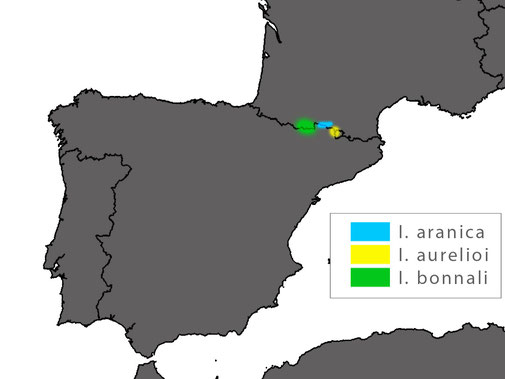Iberolacerta aurelioi - Aurelio's Rock Lizard

Aurelioi's Rock Lizards are really tough guys: They live in cold mountain habitats up to 3000 meters which forces them to hibernate for half of the year - a challenging environment for cold-blooded animals. When they come out in early summer, temperatures can still rapidly fall and even snowfall may not be excluded. When the sun is out, they can be seen basking on barren granite rocks. Due to their short activity periods, they seem to be quite long-living.
Iberolacerta aurelioi occurs exclusively in the mountains at the boarders of France, Spain and Andorra.
It shares its habitats with Zootoca vivipara (which occupies different micro-habitats with more vegetation and climbs less). Zootoca vivipara has shorter heads and compact bodies. It shows a dark vertebral line which lacks in Iberolacerta aurelioi.
Moreover, Podarcis muralis seems to increasingly invade the habitats of Aurelioi's Rock Lizard. Presumably, this could lead to some crowding out of Iberolacerta aurelioi in the course of climate warming. Podarcis muralis frequently shows a dark vertebral line which lacks in Iberolacerta aurelioi (males of Iberolacerta aurelioi may show a dark line on the tail, instead). Furthermore, it has dark-spotted, frequently orange throat, whereas Iberolacerta aurelioi has whitish throat.
Iberolacerta aurelioi differs from other Pyrenean Rock Lizards (Iberolacerta bonnali, Iberolacerta aranica) by its frequently yellow underside.






EUROLIZARDS - The Home of European Lizards! © Birgit & Peter Oefinger
